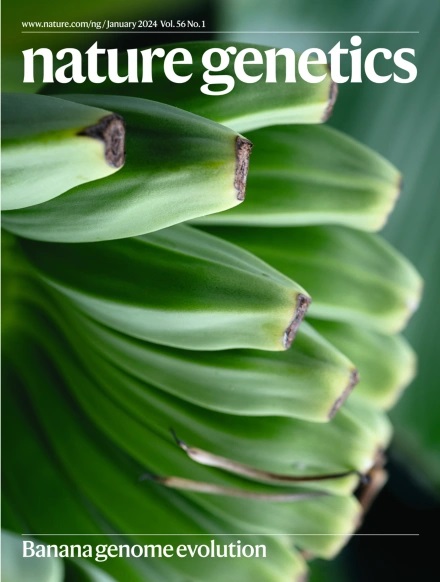扩展原位基因组测序
IF 29
1区 生物学
Q1 GENETICS & HEREDITY
引用次数: 0
摘要
尽管最近在细胞分辨率上测量转录组方面取得了进展,但缺乏将基因组组织与核结构变化联系起来的直接方法。Labade等人扩展了先前的原位基因组测序方法,将其与扩展显微镜(ExIGS)相结合,同时对基因组DNA进行测序,并以纳米级分辨率对核特征进行成像。为了验证该方法,他们使用来自早衰症患者的成纤维细胞直接将单个细胞内核结构的形态学变化与染色质组织联系起来。在早衰成纤维细胞中,与对照细胞中发现的均匀的层状层相比,染色体更紧密地遵循内层拓扑的轮廓,其特征是层状层增厚和内陷进入核内部。有趣的是,染色质组织在与异常基因沉默相关的层异常局部热点中被破坏,从而潜在地破坏了对细胞身份重要的基因程序。总之,这项工作证明了将基因组读数与超分辨率成像相结合的潜力,以获得增强的空间信息,未来的研究需要确定这些观察结果是否适用于不同的细胞和衰老背景。原始参考文献:Science https://doi.org/10.1126/science.adt2781 (2025)本文章由计算机程序翻译,如有差异,请以英文原文为准。
Expanding in situ genome sequencing
求助全文
通过发布文献求助,成功后即可免费获取论文全文。
去求助
来源期刊

Nature genetics
生物-遗传学
CiteScore
43.00
自引率
2.60%
发文量
241
审稿时长
3 months
期刊介绍:
Nature Genetics publishes the very highest quality research in genetics. It encompasses genetic and functional genomic studies on human and plant traits and on other model organisms. Current emphasis is on the genetic basis for common and complex diseases and on the functional mechanism, architecture and evolution of gene networks, studied by experimental perturbation.
Integrative genetic topics comprise, but are not limited to:
-Genes in the pathology of human disease
-Molecular analysis of simple and complex genetic traits
-Cancer genetics
-Agricultural genomics
-Developmental genetics
-Regulatory variation in gene expression
-Strategies and technologies for extracting function from genomic data
-Pharmacological genomics
-Genome evolution
 求助内容:
求助内容: 应助结果提醒方式:
应助结果提醒方式:


